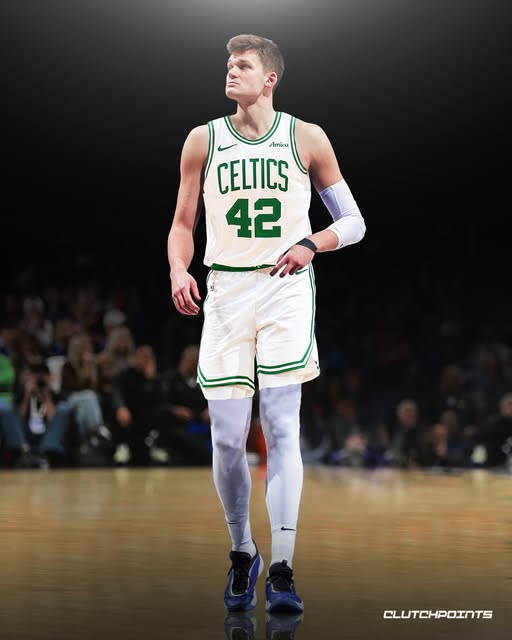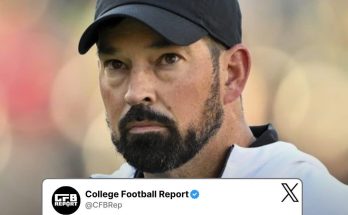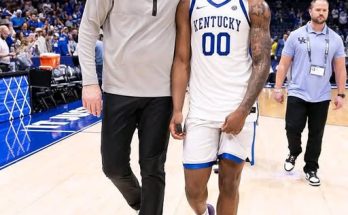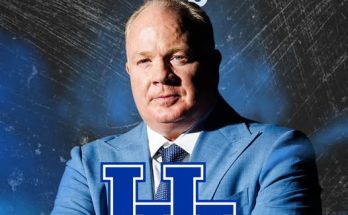The Boston Celtics have made waves in the NBA offseason over the past few years, and they show no signs of slowing down. Fresh off a championship run, the Celtics find themselves at a critical crossroads: do they reload for another title defense with an almost identical roster, or do they make proactive moves to maintain their dominance over the long haul? With Kristaps Porzingis now gone—reportedly seeking a different role and long-term security—and Al Horford likely heading into retirement or transitioning into a significantly reduced role, the Celtics’ front office is looking to reinforce its frontcourt. In what is now becoming one of the most speculated proposals across NBA circles, the Celtics have reportedly shifted their focus to Utah Jazz center Walker Kessler.
Walker Kessler, only two years into his NBA career, has already earned a reputation as one of the league’s most promising young defensive anchors. Standing at 7’1″ with a 7’4″ wingspan, Kessler has elite shot-blocking instincts, high defensive IQ, and a strong presence in the paint that few young big men can match. His rim protection and defensive versatility make him a coveted asset for any contender, especially for a team like Boston that prides itself on switching defense, high communication, and interior toughness.
The proposed trade package has sparked deep discussion: Boston would receive Walker Kessler, Kyle Anderson, and KJ Martin in exchange for Anfernee Simons, a 2026 first-round pick, and three future second-round picks. At first glance, this seems like a calculated but aggressive move from Boston. Yet beneath the surface, the motivations and consequences of this trade go far deeper, not just for the Celtics, but also for the Jazz, the players involved, and the trajectory of both franchises.
To understand the appeal of Walker Kessler to the Celtics, one must begin by examining what Porzingis and Horford offered last season. Porzingis, while a gifted offensive big with range and shot-blocking skills, was limited by injuries and often became a defensive liability in switching schemes. Horford, though an invaluable leader and still effective in stretches, has logged heavy minutes over his career and can no longer keep up with the league’s younger, quicker frontcourt players over an 82-game stretch.
Kessler, in contrast, is just entering his physical prime. In his sophomore season, he averaged 8.1 rebounds, 2.4 blocks, and 9.2 points per game in just under 24 minutes. These are not flashy scoring numbers, but they’re not meant to be. Kessler’s value is not in isolation offense or three-point shooting—he thrives as a vertical lob threat, an elite rim protector, and a help-side defender capable of anchoring a playoff-caliber defense. With Jayson Tatum and Jaylen Brown carrying the scoring load, Kessler would not be tasked with being an offensive focal point. Instead, his role would mirror what Robert Williams III once provided—only with better health and potentially more upside.
The inclusion of Kyle Anderson and KJ Martin adds further nuance. Anderson, also known as “Slo Mo,” is a high-IQ forward who brings steady ball-handling, elite decision-making, and switchable defense. He’s not going to dazzle in the box score, but his impact is measurable in how offenses function when he’s on the court. With Marcus Smart gone and Malcolm Brogdon traded previously, Boston could use another connector-type player—someone who can set up plays, stabilize the offense in bench units, and guard multiple positions.
Meanwhile, KJ Martin is a high-flying energy forward who adds depth and athleticism. Though somewhat inconsistent, his ability to guard multiple positions, crash the boards, and finish in transition would be valuable in Boston’s high-pace second unit. At only 23, Martin also fits the Celtics’ long-term vision of surrounding their stars with youthful talent that can grow with them.
On the flip side, trading Anfernee Simons is no small move. Simons is a gifted scorer and underrated playmaker, capable of erupting for 30 on any given night. Since Damian Lillard’s departure, Simons has taken on more responsibility in Portland and shown he can be a primary option offensively. However, the fit in Boston has always been questionable. With Derrick White solidified as the starting point guard and Jrue Holiday anchoring the backcourt with veteran savvy, Simons’ role on this team was never entirely clear.
Moreover, Boston’s system doesn’t necessarily prioritize individual scoring from the guard position. Instead, it values team ball movement, defensive versatility, and the ability to switch across multiple positions. Simons, for all his talents, is a subpar defender and doesn’t quite fit into the gritty, defensive-oriented identity the Celtics have crafted over the past five seasons. By moving Simons, the Celtics not only open up cap space in the future but also shift their roster to better align with their championship formula.
The Jazz, for their part, are in the middle of a long-term rebuild. Though they have a treasure trove of draft picks thanks to the Donovan Mitchell and Rudy Gobert trades, they still lack a clear offensive engine to build around. While Lauri Markkanen is an emerging star and Keyonte George has potential, adding a proven scorer like Simons—who’s only 25—gives Utah a legitimate backcourt scoring option who can create off the dribble, shoot from deep, and serve as a mentor to the younger guards.
Utah’s willingness to move Kessler likely stems from a combination of factors. For one, the presence of John Collins and Omer Yurtseven clogs up the frontcourt. Second, Danny Ainge and the Jazz front office may be betting that Kessler, while an excellent rim protector, may not develop into an all-around elite center in today’s NBA that demands perimeter shooting, switchability, and passing from its big men. This trade allows the Jazz to restock their backcourt and add another first-rounder in 2026, a draft that many scouts believe will be deep and talent-rich.
From a financial standpoint, Boston would benefit from this trade in both the short and long term. Kessler is still on his rookie contract, and his production-to-cost ratio is among the best in the league. Kyle Anderson’s contract is manageable, and KJ Martin is on an expiring deal, which gives Boston flexibility heading into the 2026 offseason. Meanwhile, offloading Simons’ contract (which runs over \$25 million annually) and preserving future cap room is a smart long-term strategy given Tatum’s upcoming supermax extension and the already massive deal given to Jaylen Brown.
It’s also worth noting the Celtics’ strategic approach to asset management. Over the past few years, President of Basketball Operations Brad Stevens has shown a willingness to make bold moves—trading away fan favorites, moving draft picks, and restructuring the team’s identity around defense, switchability, and versatility. This trade fits that blueprint perfectly. It also maintains the Celtics’ championship window while allowing for sustainability—a rare balance in today’s NBA.
Defensively, a frontcourt of Kessler, Tatum, and Brown, complemented by Jrue Holiday and Derrick White, would be a nightmare for opposing offenses. Boston would essentially become the most switchable, defensive-minded team in the league, with length at every position and elite shot-blocking to clean up mistakes. On offense, the Celtics wouldn’t lose much—Kessler doesn’t need touches, Anderson is a smart passer, and Martin adds athletic pop. The offense would continue to revolve around Tatum, Brown, and Holiday, while role players fill in around them.
One potential concern is depth. Trading Simons removes a high-level scoring option from the bench, and while Payton Pritchard has shown flashes, he’s not yet a consistent scorer or playmaker. Boston would likely need to scour the free-agent market or G-League for another ball handler or veteran shooter to round out the rotation. But that’s a small price to pay for acquiring a franchise-caliber defender like Kessler.
The real win for Boston may come in the form of continuity and stability. With Porzingis’ injury issues and Horford’s decline, the Celtics have had to shuffle their lineup frequently over the past two seasons. By bringing in a younger, more durable option in Kessler, they can stabilize their starting unit and reduce the load on players like Tatum and Brown, who have carried heavy two-way responsibilities.
Fans in Boston may initially be skeptical. Parting ways with a proven scorer like Simons and a future first-rounder is always a risk. But Stevens and his staff have earned the benefit of the doubt. Their bold moves—acquiring Holiday, bringing in Porzingis last season, and developing Derrick White into an All-Defense caliber player—have paid off. This latest proposal may just be the next masterstroke in an already impressive tenure.
In Utah, this trade signals a shift toward offensive development and guard-centric play. Simons, alongside George, could become one of the most explosive young backcourts in the league. The additional draft picks give the Jazz more flexibility in trades or the ability to move up in future drafts. Kyle Anderson was never a long-term piece for Utah, and while Kessler is a significant loss, the potential offensive gains may outweigh the defensive drop-off, especially if Utah’s rebuild timeline extends into 2027 or beyond.
The trade is also symbolic of a broader trend in the NBA: teams are beginning to place even more premium on defensive versatility and cost-effective youth. With the new Collective Bargaining Agreement putting a squeeze on teams with multiple max contracts, franchises must be shrewder than ever about balancing talent, fit, and financial flexibility. This deal is a prime example of how to walk that tightrope.
Ultimately, the Celtics are betting on defense and durability. They’re building a core that can weather the grind of an 82-game season and still shine under the brightest lights of playoff basketball. Kessler may not be a household name—yet—but in Boston’s system, surrounded by elite talent and high basketball IQ, he has the potential to become one of the most impactful centers in the league. For a franchise with 18 championships and an unrelenting hunger for more, that potential may be worth the price.



